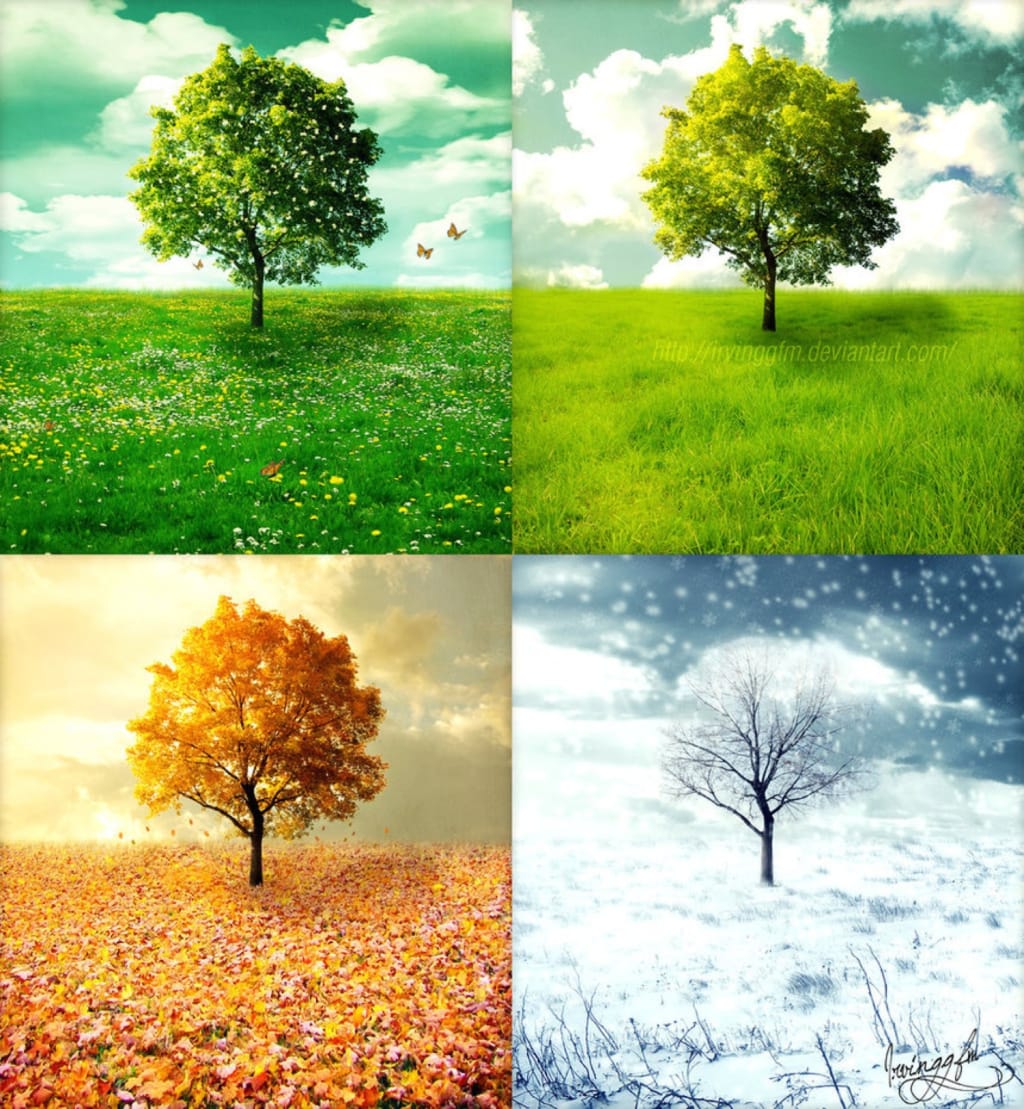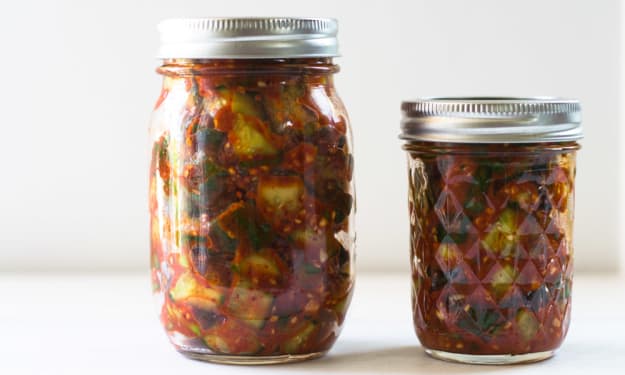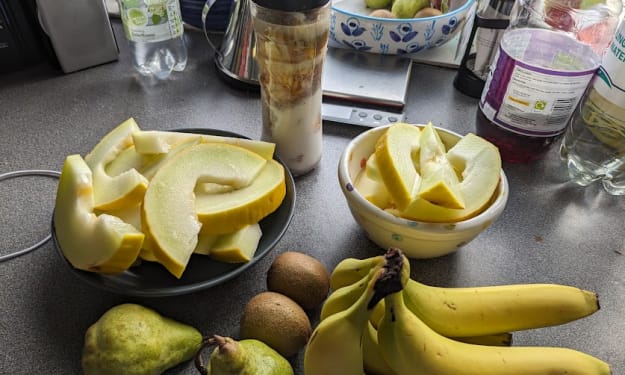Here Are Four Perfect Cups of Tea for the Four Seasons
Black, Green, White and Oolong / Winter, Spring, Summer and Autumn

Winter
English Breakfast Tea, (Orange Pekoe)
It’s the morning after the Long Night Moon. The sun is just peeking over the horizon. An early riser, you’ve descended to the living room where the coals of last night’s fire are gently falling asleep.
You take a sip of the perfect cup of tea for the winter season: English Breakfast.
History
English Breakfast tea originates from the British Empire’s Indian tea plantations. The British, fed up with a contentious trade relationship with China, struck gold when they discovered a varietal of the tea tree growing in India. Within a few years they had their own gardens growing new strains of tea.
Oxidized tea keeps much longer than green and white, and survived the voyage from India back to Europe much better than green tea. This is how black tea developed: as a way for those Europeans on the edge of the earth to get some tea leaves home.
The British East India Company shipped the Indian-grown leaf to England where it was blended by early magnates like Sir Thomas Lipton to be sold as what became known as English Breakfast Tea. And there you have it.
Tasting/Bouquet Notes

English Breakfast is a strong tea, blended to compliment the fat from cream and the sweetness of sugar.
Whether you add cream and sugar or not the first sip will be invigorating. This is less from the caffeine, which isn’t all that high, than from the quality of the flavor and the relatively high temperature of the liquid. It shouldn’t be too hot to sip, but hotter than green or oolong tea.
An English Breakfast tea of a higher grade, such as orange pekoe, is valuable more for what you do not taste than what you do. When you brew using quality water without over or under steeping, you won’t taste any undue bitterness or astringency. There will be no unwanted metallic or chemically flavors, nor the coarse, simplistic flavor of many grocery-store tea bags.
Instead you will be left with rich and bright notes of malt. A clear, bright flavor will clear your mind, as if a light but strong breeze is blowing away sleepiness.
The color without cream is clear, brilliant, beautiful mahogany. If you choose to add cream, enjoy the complex clouds that the milk makes in the cup before it diffuses.
You set the fine-bone china cup back down on its saucer. The sun is just peeking through the window now. It’s a bright, cold day, but you’re starting it off perfectly.

Spring
Gyokuro Green Tea
The last tufts of snow are disappearing. Rivulets of freezing water carve tiny gorges in spongy green grass banks. The air remains cool but the sun is nice and warm. Everywhere dances the fragrance of flowers.
So many of the sights and sounds of Japan are unfamiliar to you, but the appeal of spring is universal. It’s the appeal of new life.
In a vase on the portico outside the tea house is a single hibiscus flower. A few drops of clear water run down the glass and scatter on the oak floorboards. A cool breeze tussles the impossibly thin pink petals.
A new perfume wafts from the direction of the tea house. This is your cue to rise and move through the garden to greet the tea master on the far side. He brings you into the tea house and presents you with a small porcelain cup. Inside is Japan’s most special tea: gyokuro.
History
Gyokuro is related to sencha tea, but unlike standard sencha it is grown in artificial shade. The growing and processing procedures are tightly guarded secrets, but the result is one of the most special teas in the world. In the past only the rich could afford it; today, though not an everyday tea, it is far more reasonably priced.
This one of a kind tea was discovered during the late Edo period by the great Yamamotoyama tea-makers. Although this is relatively recent in the long history of tea, much has happened since then. If we were to put tea development on a timeline, we would see an explosion of diversity during the 19th century. In many ways, the development of gyokuro was a watershed moment in the history of tea. It marks the beginning of unprecedented heights of quality and, more importantly, unprecedented equity of access.
We must be extraordinarily thankful for the existence of gyokuro.
Tasting/Bouquet Notes

The freshly-steeped tea leaves are a beautiful bright green and issue a unique fragrance. If you know, you know. Akin to freshly mown grass, with a deep umami satisfaction, the scent is deep and complex but not overpowering. Breathe in deeply over the leaves. This scent will bring you peace.
Before sipping gyokuro it is imperative that you wait, focusing on the smell. Letting your mind clear. Only bring the cup to your lips when it seems natural to do so.
You will be met with a much more nuanced flavor than a tea like English Breakfast possesses. The first sensation will be umami: a rich, satisfying savoriness. It’s delicious like filet mignon is delicious. You will probably sit back and sigh.
The flavor will develop on your palette long after sipping. After the grassy umami comes a pleasant sweetness, as of red fruits. But this is subtle.
The experience will culminate with a fresh, floral sweetness.
The true, unique appeal of tea is aesthetic before all else. Drinking a cup of gyokuro, you place yourself in a carefully controlled framework; you, as it were, become a flower in a bouquet or a blot of paint in a painting.
This is what makes tea unique. It is integrative, inclusive, of the utmost beauty but not unapproachable.
Gyokuro invites us to care deeply about tea. If you are willing to exert a little bit of control over your environment to create an aesthetic experience, this tea will reward you with a special experience.
Drink your gyokuro on a day in mid-June, after a light rain.

Summer
Silver Needle White Tea
The light, delicate greens of spring have deepened and strengthened. The sun is hot, and the breeze is refreshing. The bushes and trees have shed their blossoms. The sunflowers grow tall.
Tea is a warm drink, but the right cup can refresh you on a hot summer afternoon. Sitting in the shade, in your backyard, you pour a little pretty pale liquid into your earthenware cup. You’ve chosen the perfect summer tea for this afternoon: silver needle.
History
The history of silver needle is murky, but it may date from the end of the 18th century when it was developed by tea-makers in Fuding, China. It quickly found its way onto the Chinese Famous Teas list.
Exportation of green and white teas closely follows developments in transportation technology. Silver needle reached the wider world at the end of the 19th century when ships could make long-distance voyages quickly enough to export non-black teas.
Tasting/Bouquet Notes

A white tea, silver needle produces a liquid of very pale green. If poured into a cup that isn’t white, its delicate color will be lost.
Bringing the cup to your nose, you experience a feeling of gentleness. It is sweet and dreamy, like a small tuft of wildflowers. The flavor is comparably subtle. A novice tea drinker may at first think that the pot must be under-steeped. But a degree of patience and experience yields a surprisingly complex flavor profile. Stone-fruit, nectar, and flower-petals are present.
How remarkable that this tea comes from the same plant that made English Breakfast tea! Could they be more different?
Feel the oppressive heat of summer melt away with silver needle.

Autumn
Milk Oolong
Crimson, gold, yellow, brown. As far as the eye can see, rolling hills of maples, elms and oaks are transforming from the deep green of summer to the color-spangled hues of autumn. There’s a chill in the air. The days are getting shorter and darker. Animals are slowing down, getting ready for winter. So are you.
The larder is a cornucopia of autumn fruits and vegetables. It’s been a good harvest. Time to sit back and watch the early sunset with a cup of tea.
History
Oolong tea has an extensive history in China and Taiwan. It may have first developed in the breathtaking Wuyi Mountains of south-east China, a beautiful area marked by craggy peeks and deep-cut gorges.
An ancient process of semi-oxidation and leaf withering makes oolong a middle point between green and black tea, but it is unlike either. Lovers of oolong prize its beautiful scent and delicate, sometimes sweet flavor. For a chilly autumn evening, a tea like the famous milk oolong is perfect.
Tasting/Bouquet Notes

Take the first sip as the sun sinks low on the horizon and casts dramatic shadows through your living room.
Hints of ripe apple, dried stone-fruit, and oatmeal dance across the tongue. They pair well with the deep colors of autumn. Your gaze will fall and fix on something warm: your hearth, a rug, a heavy curtain, an animal friend you live with.
Like gyokuro, milk oolong will clear your mind and provide you with peace. Drink this tea only after you have completed the day’s work, and ahead of a meal.
This tea, like all teas, is best shared. Surround yourself with loved family members and friends and pour each person a cup. Toast to the setting sun, the darkening days, the growing chill. Winter is not easy for us humans. But if we prepare ourselves well, we can thrive, we can rest, we can love.

What Makes Tea Special?
There is a tea for every situation. A tea for celebration, a tea for mourning, a tea for those who are lost, a tea for those who feel at home for the first time. Drink tea when you have a full day’s work ahead of you. Drink tea when you sit down in the evening with a sigh, the day’s work done. Drink tea because you’re upset. Drink tea because you’re at peace. Drink tea to meditate. Drink tea to be wild.
One little plant, and so many possibilities. The same principal that governs them all is this: tea believes in you.
About the Creator
Eric Dovigi
I am a writer and musician living in Arizona. I write about weird specific emotions I feel. I didn't like high school. I eat out too much. I stand 5'11" in basketball shoes.
Twitter: @DovigiEric






Comments
There are no comments for this story
Be the first to respond and start the conversation.